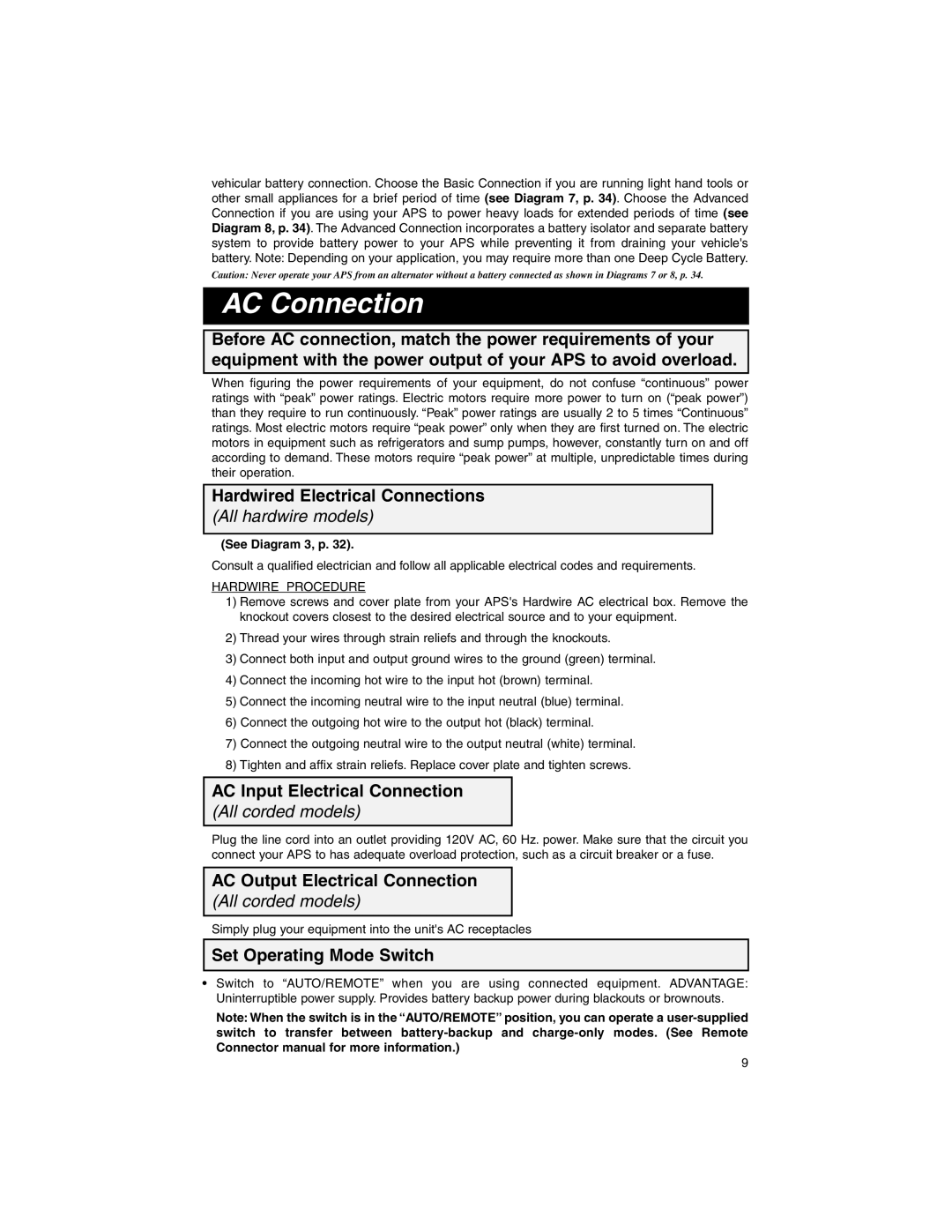APS PowerVerter specifications
Tripp Lite, a key player in the field of power products, offers the APS PowerVerter series, which is designed to deliver reliable and convenient portable power solutions. The APS series includes inverter/chargers aimed at providing backup power to a variety of devices and applications.One of the standout features of the Tripp Lite APS PowerVerter is its pure sine wave output. This technology is crucial for users who need a stable and clean power source, especially for sensitive electronics like laptops, medical equipment, and home appliances. Pure sine wave inverters ensure that devices operate smoothly without the risk of damage or malfunction, making them ideal for both recreational and professional use.
The APS PowerVerter series offers a compact and lightweight design, enhancing portability. Users can easily transport these inverters for use in RVs, boats, or remote job sites. The robust construction ensures durability, suited for outdoor environments where reliability is paramount.
Incorporating advanced safety features is another hallmark of the APS PowerVerter. These inverters are equipped with various protection mechanisms like overload protection, short circuit protection, and thermal shutdown. These features ensure that both the inverter and connected devices remain safe during operation, contributing to a peace of mind for users.
The system also includes a built-in charger, an advantageous feature that enables users to charge the connected batteries while simultaneously using the inverter's output power. This dual-function capability is particularly useful for those who require continuous power supply and may need to switch between battery and AC power seamlessly.
Tripp Lite's APS series also supports various input and output options, including multiple AC outlets, alongside USB ports for charging mobile devices. This flexibility allows users to connect a broad range of applications, from office equipment to recreational gear.
Overall, the Tripp Lite APS PowerVerter exemplifies reliability, versatility, and safety in portable power solutions. Its combination of pure sine wave technology, compact design, safety features, and dual charging functionality makes it an excellent choice for individuals seeking uninterrupted power in a variety of settings. Whether for outdoor adventures, emergency backup, or professional usage, the APS PowerVerter meets diverse power needs with assurance and efficiency.

